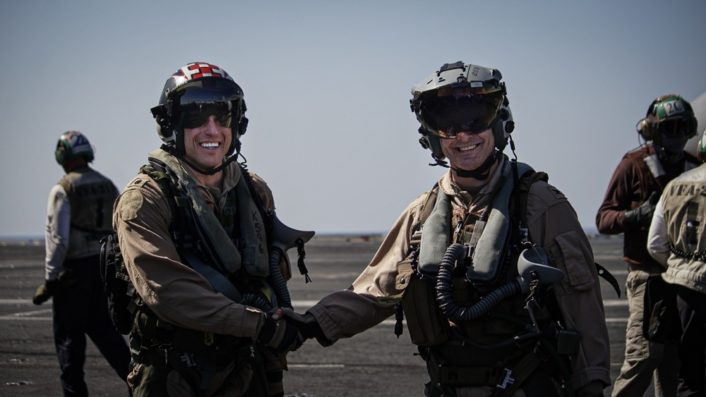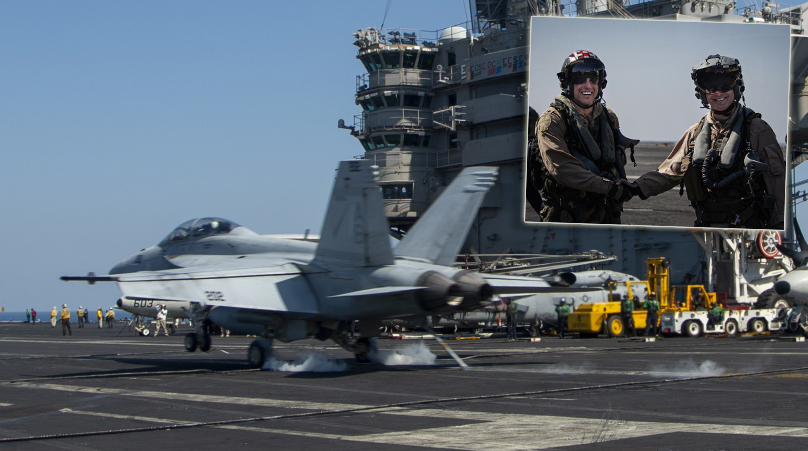Just a handful of naval aviators have completed 1,200 trap landings on the flight deck of an aircraft carrier. Since Feb. 1, Capt. Robert Gentry, is one of them.
Landing on a carrier is anything but easy, especially at night, in bad weather, high-seas and after a combat mission lasting many hours. That’s why, for instance, from the last three quarters of a mile all the way to touchdown the pilot approaching a U.S. aircraft carrier also rely on LSOs [Landing Signal Officers – radio callsign “Paddles” – skilled and experienced pilots whose job is to watch the deck-landing of all the airplanes and provide the pilots with radio guidelines to adjust the final phase of the approach, complementing IFLOLS (Improved Fresnel Lens Optical Landing System) and ICLS (Instrumental Carrier Landing System) visual information.]
As you may understand the number of completed arrested landings talks a lot about the experience of a naval aviator: it’s a testament to the number of training and combat missions flown and completed in all the conditions during several years of “blue water ops”.
On Feb. 1, Capt. Robert Gentry, a naval flight officer, commander of Carrier Air Wing (CVW) 1, completed his 1,200th career trap landing flying in an F/A-18F Super Hornet of the Strike Fighter Squadron (VFA) 211 “Fighting Checkmates” deployed with Harry S. Truman to the U.S. 5th Fleet area.
According to the U.S. Navy, few aviators have made the “The Grand Club” (as the Tailhook Association, an independent, fraternal organization supporting sea-based aviation, has defined aviators who have completed 1,000 traps), fewer still, perhaps in the single digits have surpassed 1,200.
Capt. Gerry was in the backseat of a VFA-211 “Rhino” (as the Super Hornet is dubbed aboard U.S. flattops) piloted by Cmdr. Kenneth Hockycko, the commanding officer of VFA-211.
“To share his 1,200th trap was an honor and, to me, symbolic of what we hold dearest as naval aviators – commitment to our craft, commitment to mission accomplishment, and commitment to one another,” said Hockycko in a news release.

“The Navy doesn’t keep people around and flying long enough to get to 1,200 traps unless they are worthy of being placed in leadership positions,” said Hockycko. “An aviator’s trap count is a measure of sea time, airmanship and leadership. To reach quadruple digits, one must have deployed and worked up many times.”
In its career, spanning four decades, Gentry has also flown in the EA-6B Prowler, EA-18G Growler and the F-14 Tomcat, all contributing to his 1,200 traps. By comparison, junion officers can just hope to break 200 ones on their first tour of duty at sea, but most of times, the number of arrested landings is much lower than that. “As a point of comparison, I’m on my fourth sea tour, and I have fewer than half the traps CAG does,” said Hockycko.









